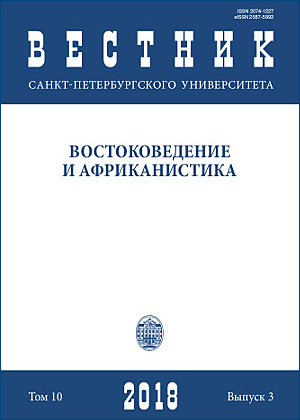The oral history of Dogon villages and migrations’ to Dogon Plateau
DOI:
https://doi.org/10.21638/spbu13.2018.304Abstract
Despite the increased attention to the Dogon by anthropologists and ethnologists, there are many “white spots” in the history and ethnography of this people. For example, not so long ago it was believed that they speak six languages; then their number grew steadily, and now linguists number already thirty Dogon languages, conditionally united in the family of Dogon languages of the macro-family of Niger-Congo; it is possible that there are even more of them. The history of migrations on the Bandiagara Highlands and the adjoining plains also remains poorly understood. All existing hypotheses, one way or another, based on oral traditions (often without specifying the informant and/or source). Only to a small extent are they based on archaeological data. In addition to the “common Dogon” historical tradition, which states that this people came to the Plateau around the turn of the 16 th century, there are historical legends of individual villages, their neighbourhoods and even families. They can be very different from the ‘general’ version. From this point of view, two oral histories of the village of Endé are of great interest. Based on the analysis of these legends, it is possible to draw with all possible caution a preliminary conclusion that the Dogon country was populated in two stages: the first one falling between the 10th and the 13th centuries, and the second between the 15th and the 19th centuries. In all examined villages exists the same model of relations between the local population and the aliens: the new group usurps political and military power and gives the old population its clan name, but itself adopts its language and culture. Such relations designed to prevent possible conflicts. The article based on an analysis of the Dogon oral history collected during field research between 2015–2018.
Keywords:
Mali, Dogon, oral history, migrations
Downloads
References
Downloads
Published
How to Cite
Issue
Section
License
Articles of "Vestnik of Saint Petersburg University. Asian and African Studies" are open access distributed under the terms of the License Agreement with Saint Petersburg State University, which permits to the authors unrestricted distribution and self-archiving free of charge.





